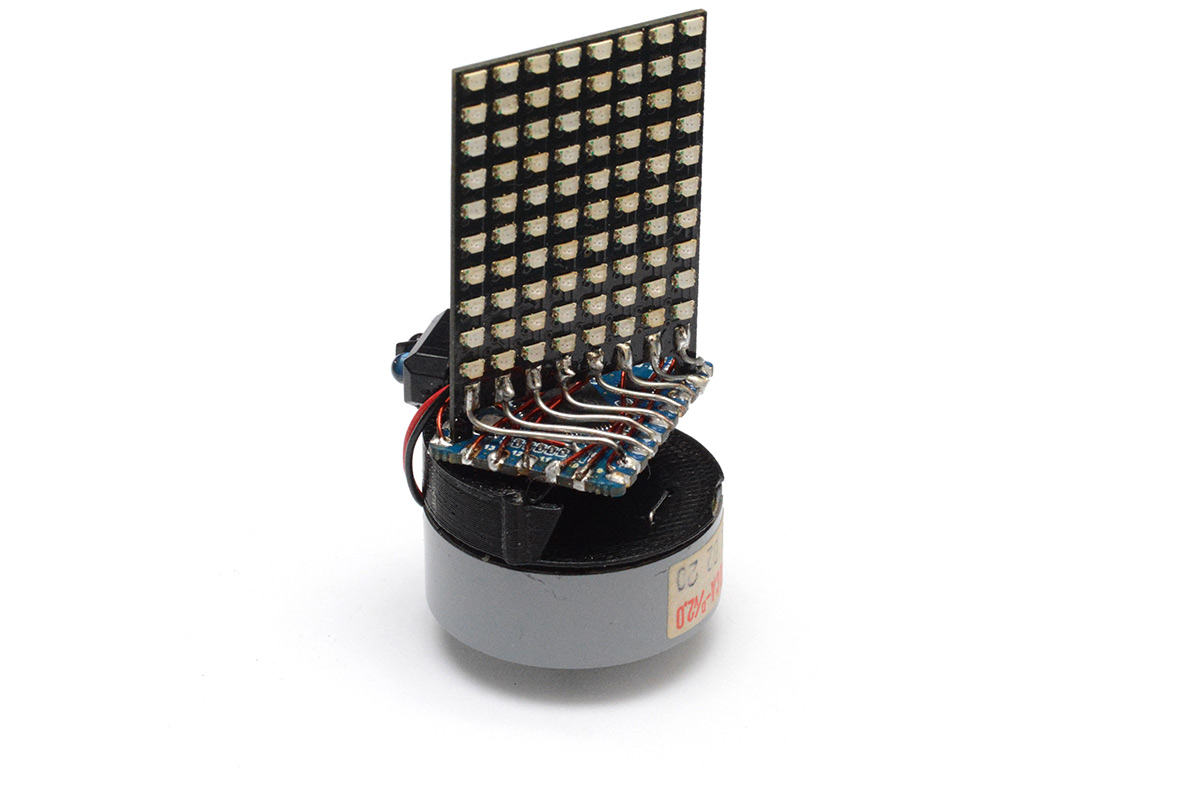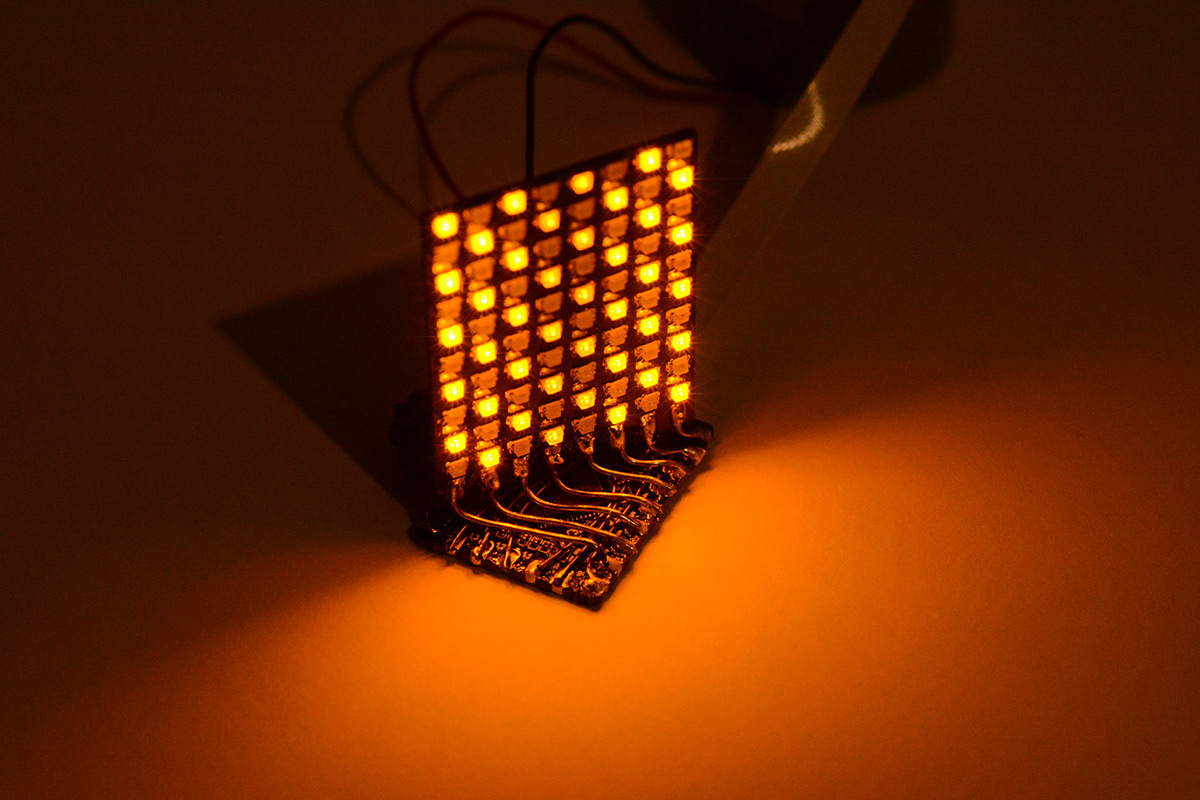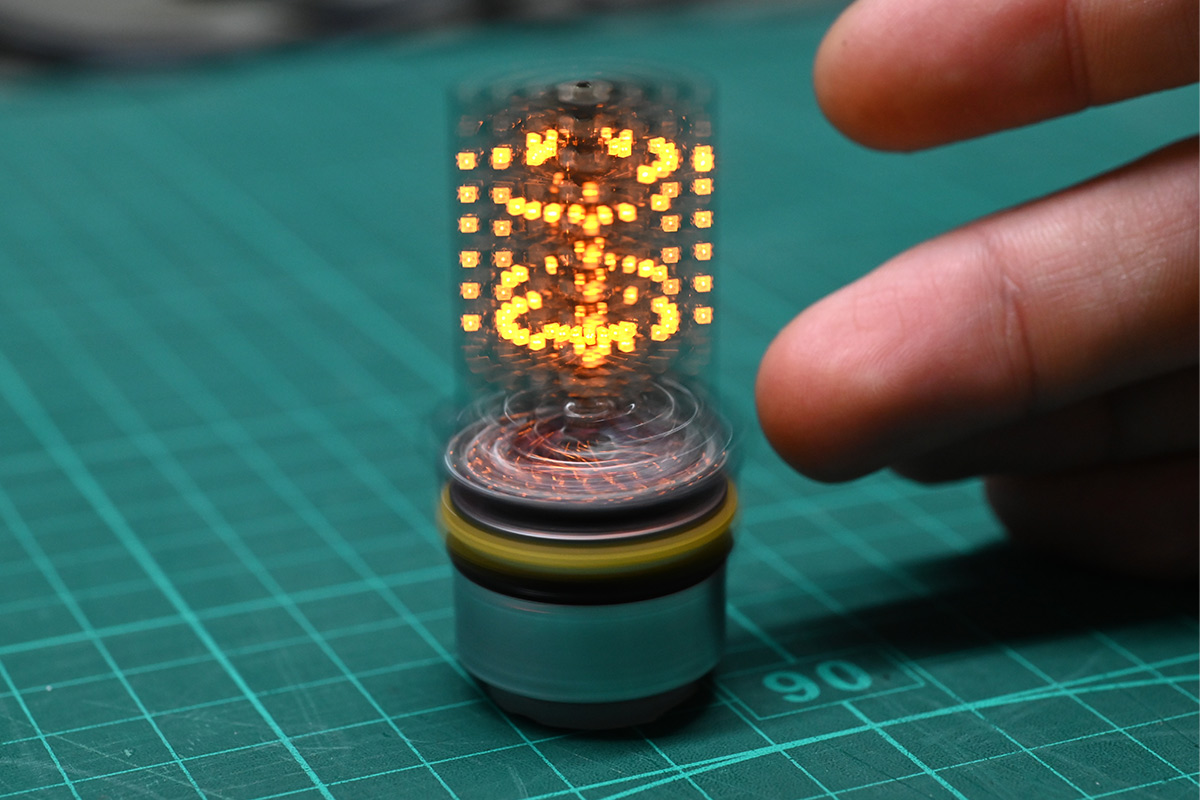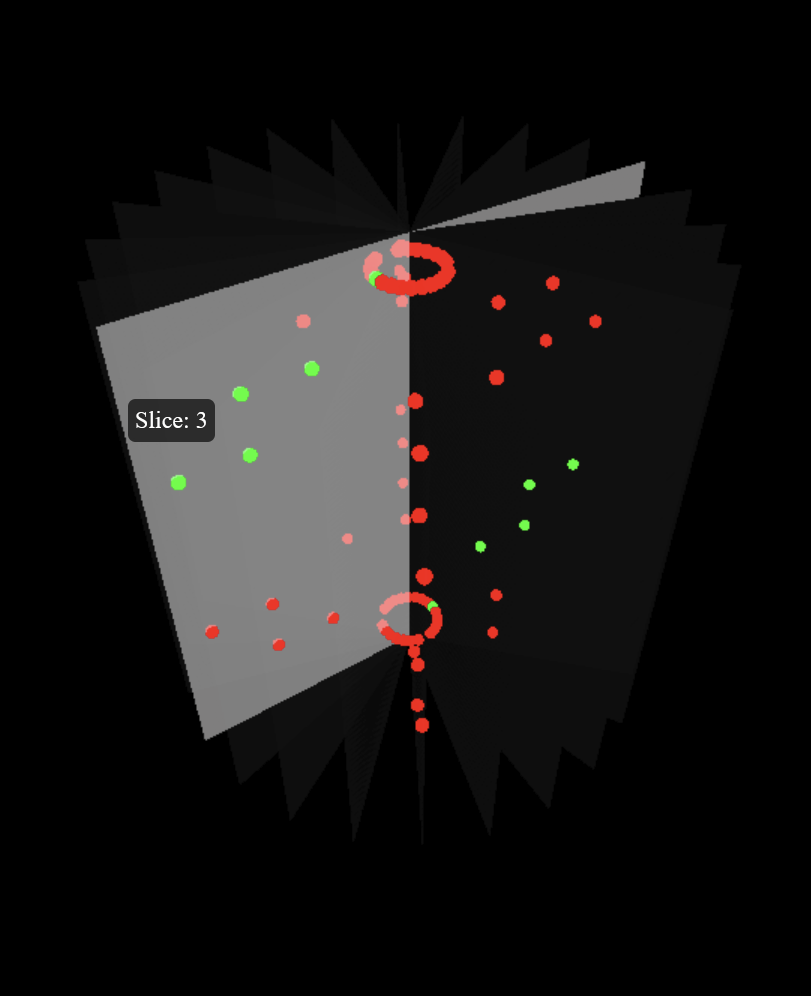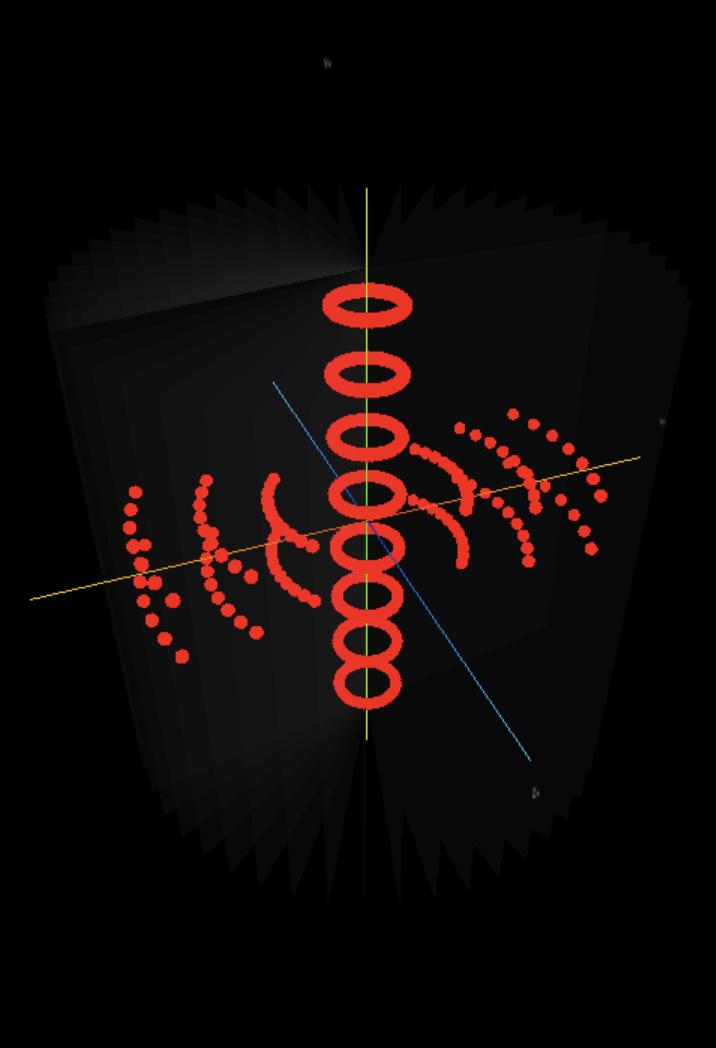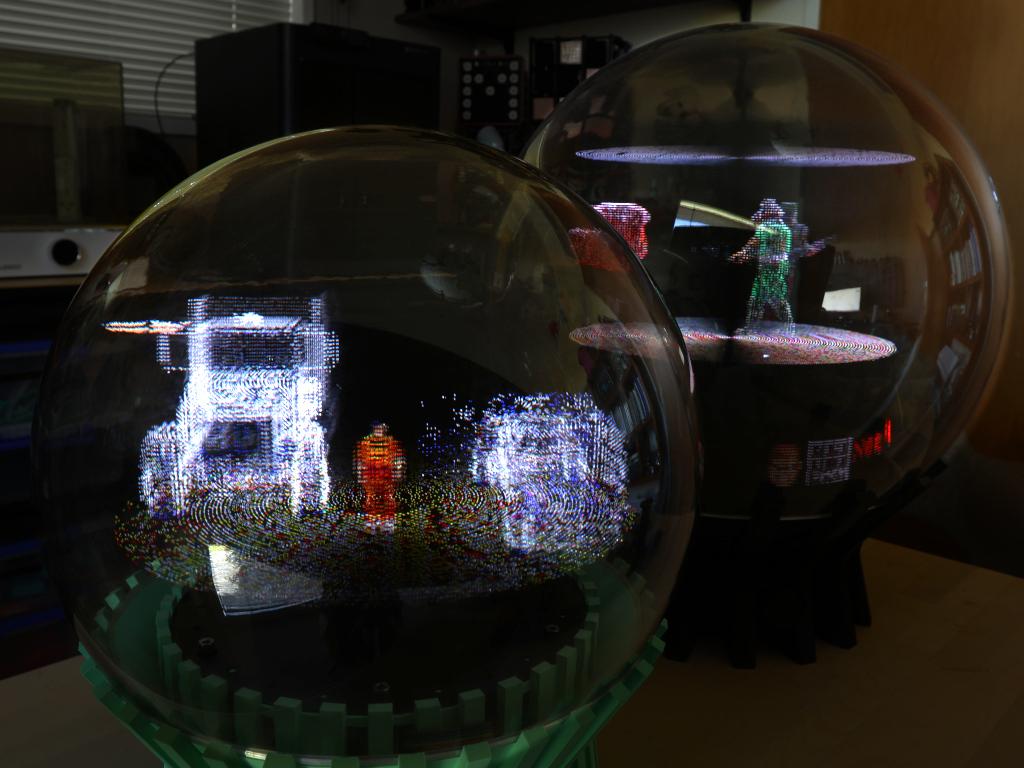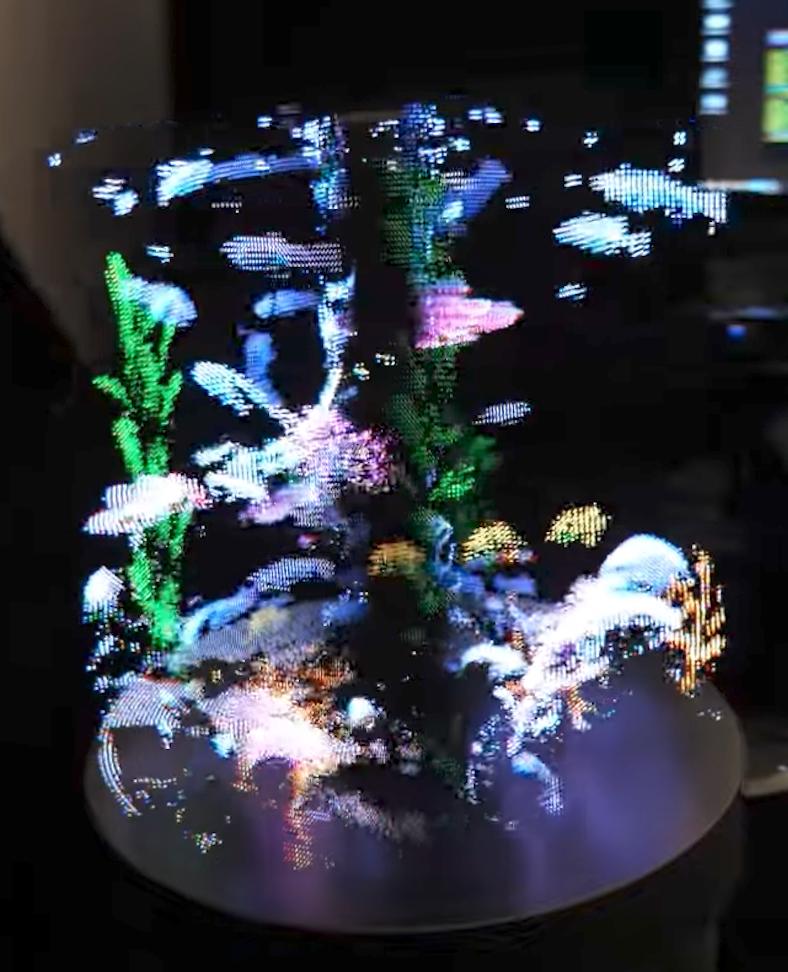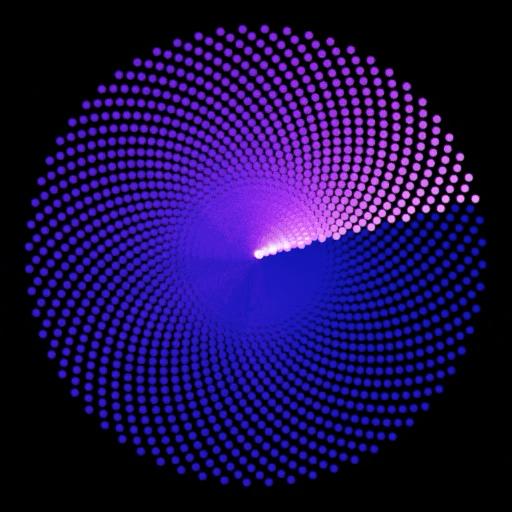Volumetric Displays
my exploration on the contemporary creations of volumetric
displays...
MITXELA
his blog
mitxela.com/candle
might better explain this, but observations from my end:
a very clever design, how he managed to fix the axle and rotate
the motor instead.
used a LiR2450 rechargeable coin cell to power the motor, RP2040
Tiny and the 8x10 LED matrix.
instead of rasterising an .obj file to voxels, he used an
intersection technique in Blender and exported the voxel data.
Ancient James (James Brown)
James' version of the volumetric display is the most robust so far
from the makers around.
two versions:
one with 128x64 LED matrix (two 128x64 back and forth).
another with 128x128 (two 128x64 side by side).
github.com/AncientJames/multivox
the code includes three main programs:
vortex – runs on Raspberry Pi and
lights up the actual matrix.
virtex – an OpenGL program which
simulates the actual display.
viewer – helps import 3D objects and
images to memory buffer read by Virtex and Vortex.
his Mastodon thread has more content on volumetric displays than
anywhere else on the internet.
a very clear explanation on how to get a uniform voxel density
across the volume.
Mastodon Thread
Voxon Photonics
youtube.com/@Voxonphotonics
The very first time i came across the term "a volumetric
display" was when Voxon Photonics happened to my feed. i was
amazed; it really felt magical to see how people were playing
games in true 3D. i think they are the pioneers of this tech,
though i've found a very old research paper on creating swept
volumetric displays (i'll attach the link soon, will have to go
crazy finding it in bookmarks).
BrightVox
